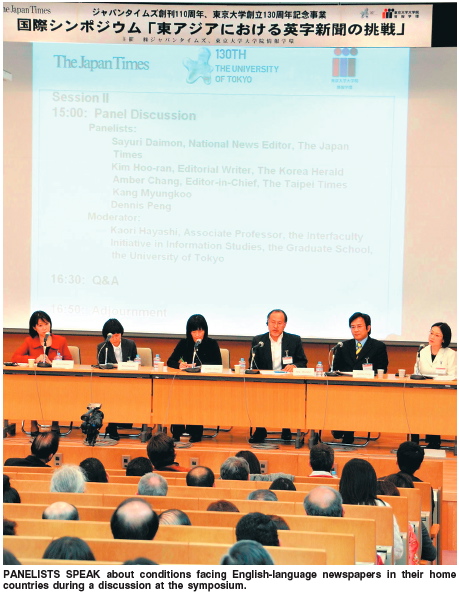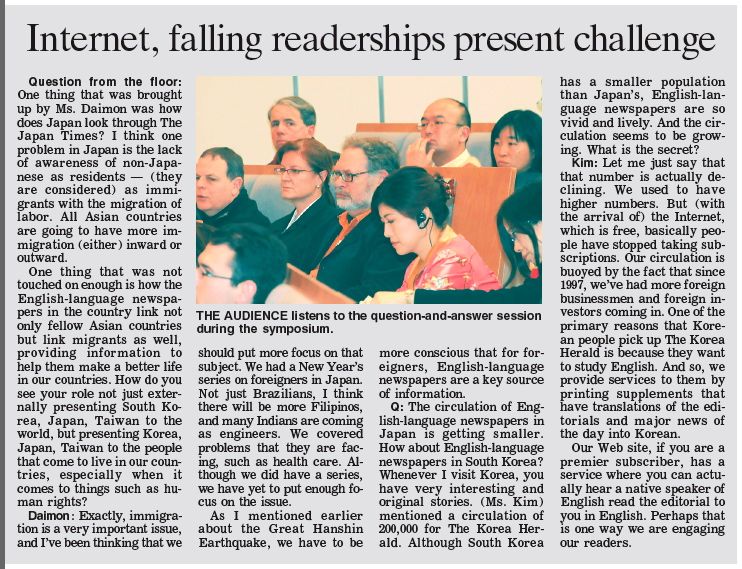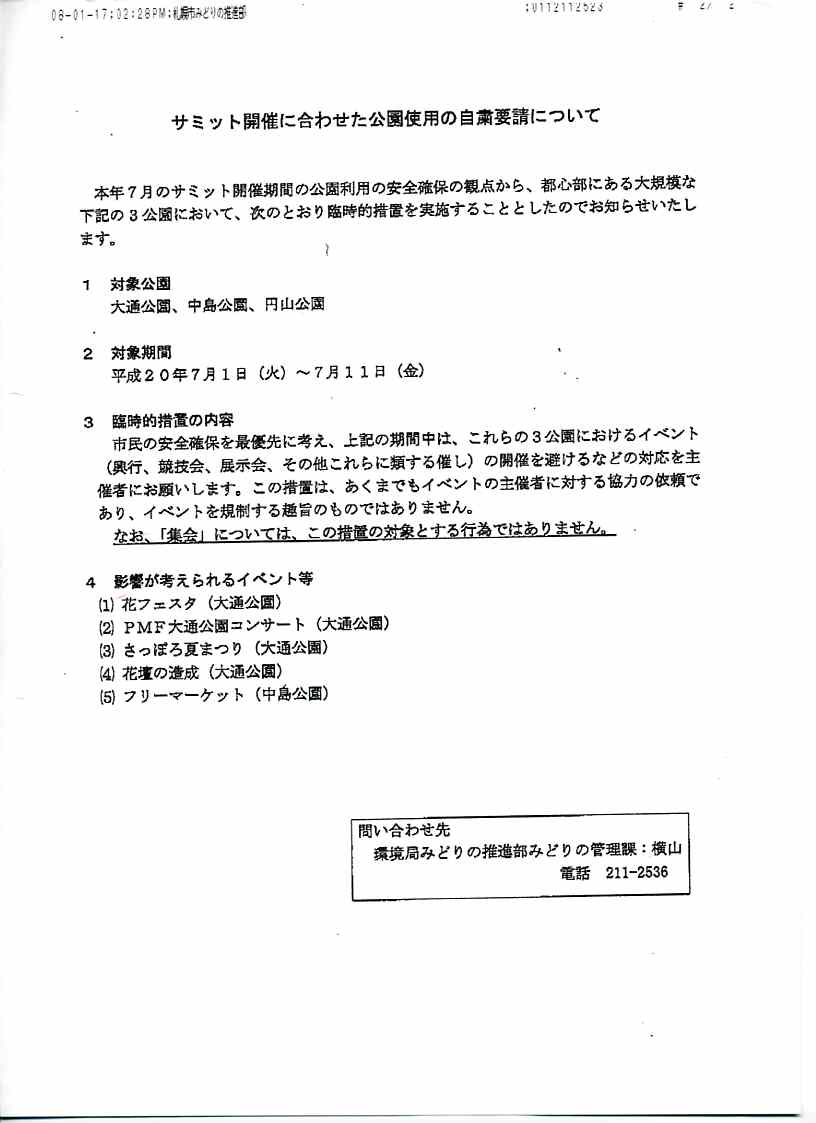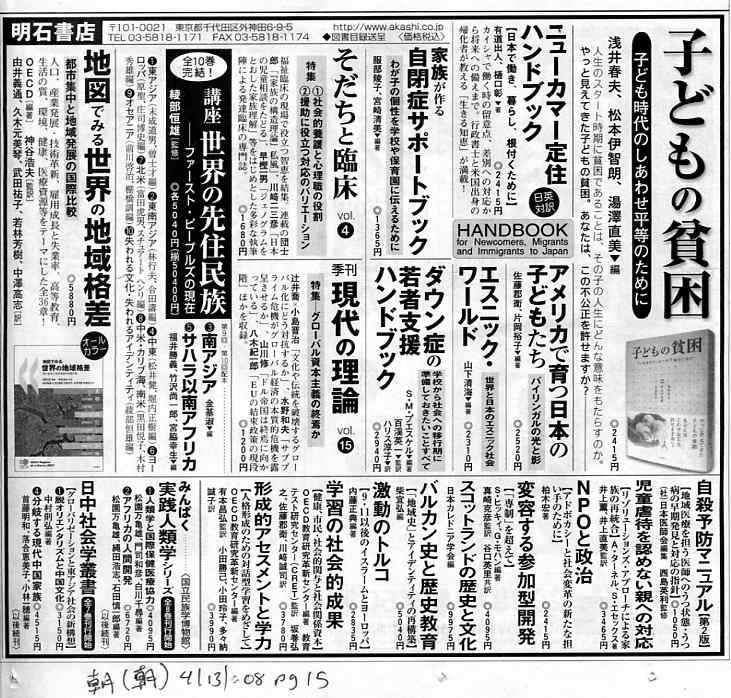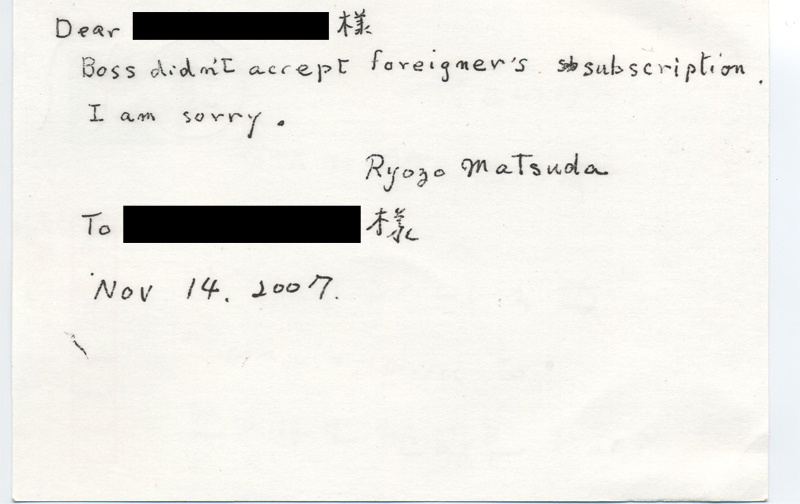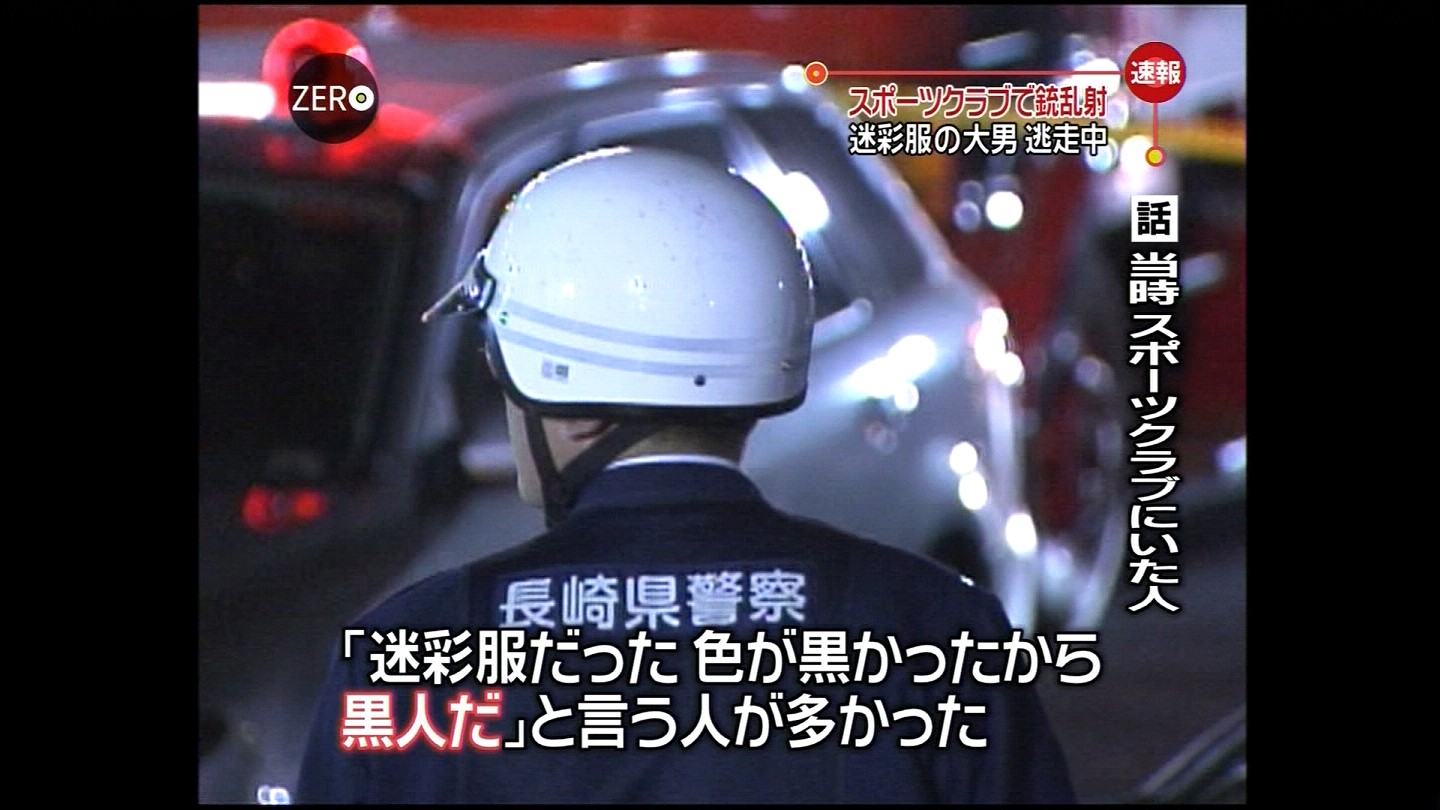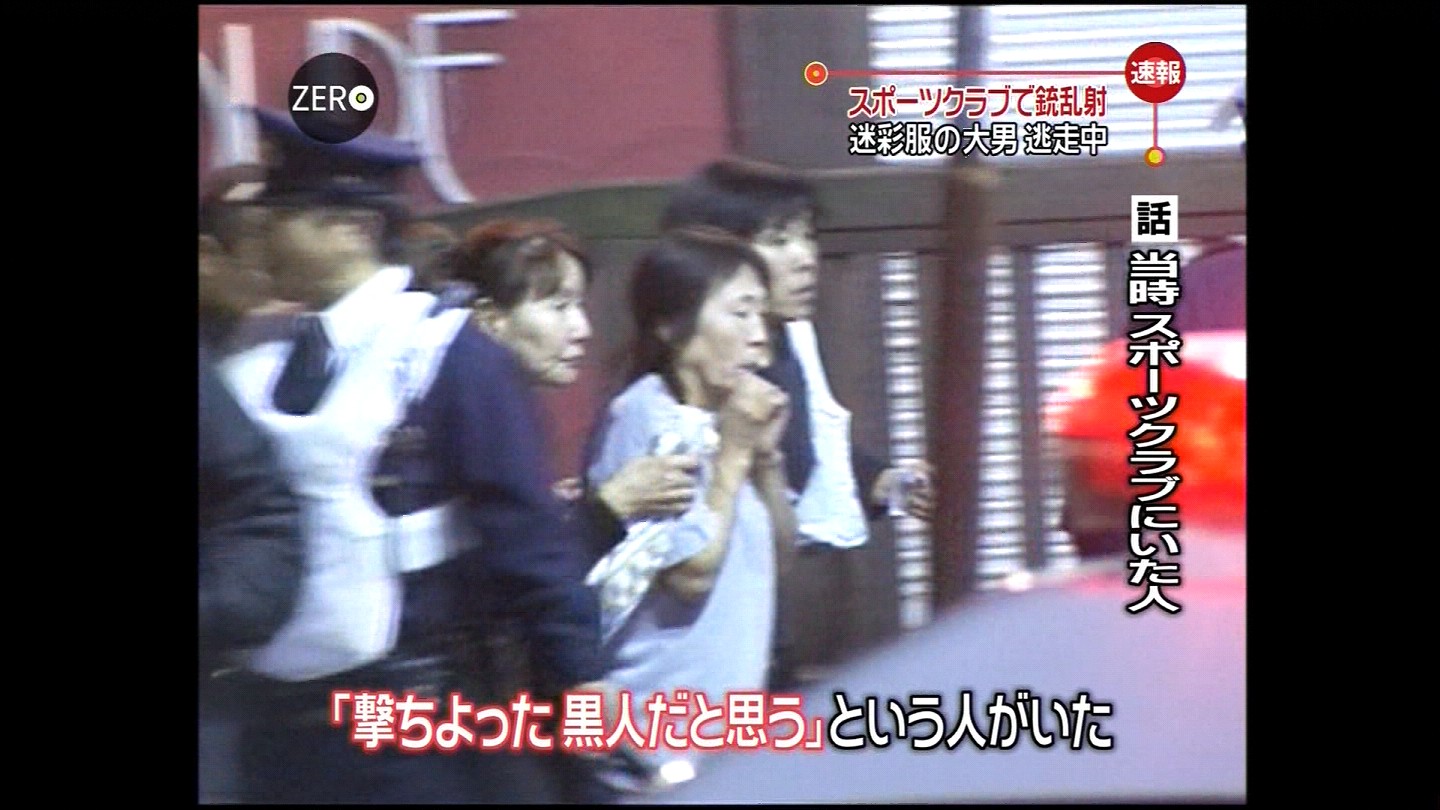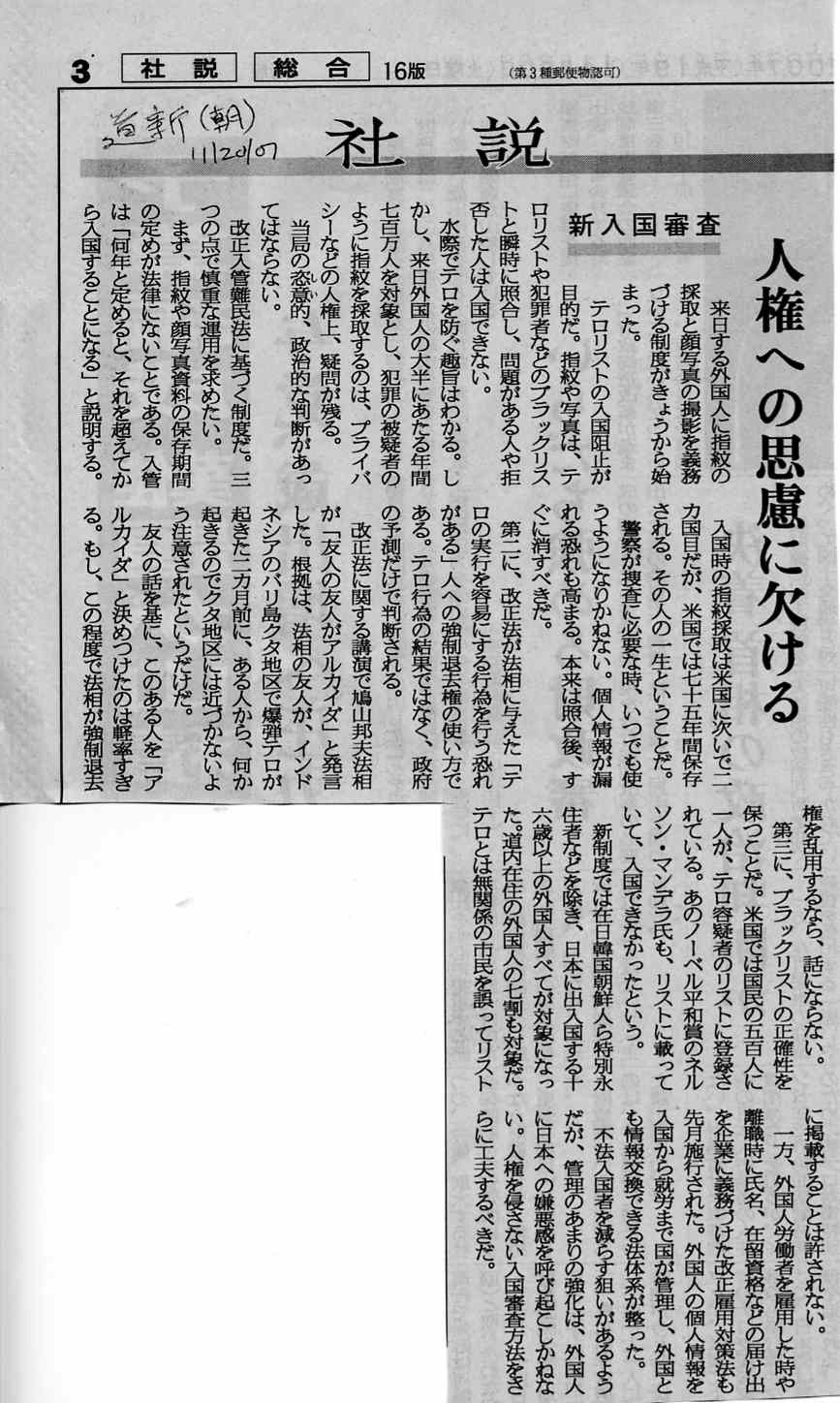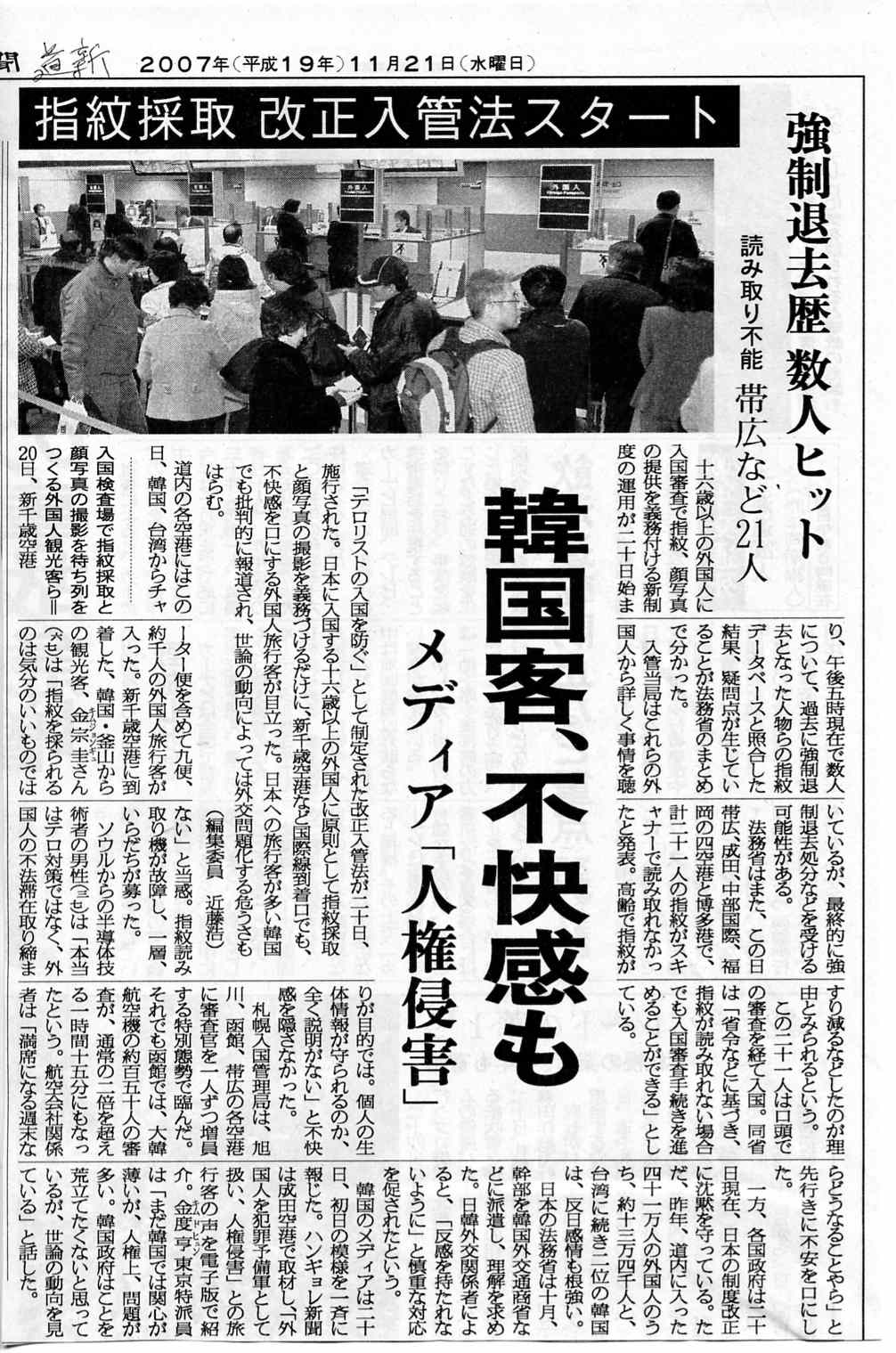mytest
Happy New Year, everyone. Let’s kick off the new year with a post on our future as bloggers here: Internet info site Gyaku on Japan’s future regulation of the Internet.
My minor comment at this point is that I have mixed feelings about regulation–in that I know from personal experience there is no mechanism in place for regulating libel. I won a case in court exactly two years ago against the world’s largest BBS system, 2-Channel, for libel and defamation (where an anonymous poster said things I never said about the Iraq War etc.–see information site here). 2-Channel not only refused to either delete the comments or reveal the IP of the anonymous poster(s), but also administrators refused to answer any correspondence, appear in court, or pay court-ordered damages. Despite the same thing happening to dozens of other plaintiffs, all resulting in defeat for 2-Channel, there have been no arrests, and no progress whatsoever; you can still Google the libelous comments against me today and get more than 800 hits. Clearly something has to be done about this.
There are, of course, two issues which call for reform. One is a business registry issue–where there is no way to seize the assets of anonymous Internet “media sources” (the normal way of regulating the media when they say things that are untrue and damaging). The other is a Japanese judiciary issue–there is no Contempt of Court in Japan (which would change a Civil Suit into a Criminal Suit and cause 2-Channel administrators to be arrestable). But once you get the ball rolling on this issue, you never know what’s going to happen, when the actions of the GOJ are done in such secrecy and (ironically) with insufficient media scrutiny. And moderate reforms have a habit of becoming major–as the letter of the law is often left vague, and once enacted the GOJ appends “bureaucratic directives” to give enforcers more powers after the fact. 2-Channel, you’ve brought things like this upon all of us. Arudou Debito in Sapporo
//////////////////////////////////////////////////////////////////
Regulating the Japanese cyberspace, one step at a time
Thursday, December 27, 2007
by shioyama
http://gyaku.jp/en/index.php?cmd=contentview&pid=000320
Courtesy DJD and JBB
With little fanfare from local or foreign media, the Japanese government made major moves this month toward legislating extensive regulation over online communication and information exchange within its national borders. In a series of little-publicized meetings attracting minimal mainstream coverage, two distinct government ministries, that of Internal Affairs and Communications (Somusho) and that of Education, Culture, Sports, Science and Technology (Monbukagakusho), pushed ahead with regulation in three major areas of online communication: web content, mobile phone access, and file sharing.
On December 6th, in a final report compiled by a study group under the Somusho following up on an interim report drafted earlier this year, the government set down plans to regulate online content through unification of existing laws such as the Broadcast Law and the Telecommunications Business Law [1,2]. The planned regulation targets all web content, including online variants of traditional media such as newspaper articles and television broadcasting, while additionally going as far as to cover user-generated content such as blogs and webpages under the vaguely-defined category of “open communication” [3,4,5,6].
Only days following the release of the Dec. 6 report, again through the Somusho, the government on Dec. 10th requested that mobile phone companies NTT Docomo, KDDI, Softbank and Willcom commence strictly filtering web content to mobile phones for users under the age of 18 [7,8,9,10]. The move to filter content in this area comes at a time when the Japanese market has become saturated with mobile phones, a growing proportion of which are held by high-school and even grade-school students. The proposed policy, in part responding to fears and anxieties expressed by parents about online dating sites, is broad in scope and reportedly covers all websites with forum, chat, and social networking functionality.
Regulation of a third area of online communication, that of online file sharing, was meanwhile advanced through the Private Music and Video Recording Subcommittee of Japan’s Agency for Cultural Affairs (under the Mobukagakusho) in a meeting held on December 18th. Authorities and organizations pushed in this case for a ban on the download of copyrighted content for personal use, a category of file transfer previously permitted under Article 30 of Japan’s Copyright Law [11,12,13,14].
The final report on Internet regulation released on December 6th, and the meetings about mobile phone regulation and copyright policy held on December 10th and 18th, collectively touch on nearly every aspect of modern network communication in Japan and together indicate a significant shift in government policy vis-a-vis the Japanese cyberspace. While granted little attention in mainstream media, a series of Japanese-language articles, government reports, and blog entries on the topic together sketch basic details of the proposed regulations. The main points of these documents are summarized below, with references to resources offering more in-depth discussion included at the end of the article.
Step 1: Web content
Plans for regulation of web content are summarized in two primary documents drawn up by the “Study group on the legal system for communications and broadcasting” under the Ministry of Internal Affairs and Communications (Somusho) and headed by Professor Emeritus at Hitotsubashi University Horibe Masao. The first document is an interim report released on June 19th, setting down basic guidelines for regulating web content through application of the existing Broadcast Law to the sphere of the Internet [1,4]. Incorporating the views of a reported 276 comments from 222 individuals and 56 organizations collected shortly after publication of the interim report, the final report, made public on December 6th, sets down steps to move ahead and submit a bill on the proposed regulations to the regular diet session in 2010 [2,5,6].
One of the key points of both reports is their emphasis on the blurring line between “information transmission” and “broadcasting”, a distinction that becomes less and less meaningful as content-transfer shifts from the realm of traditional media to that of ubiquitous digital communication (so-called “all over IP”). The reports deal with this difficult problem in part through the creation of a new category, that of “open communication”, broadly described as covering “communication content having openness [kouzensei/公然性] such as homepages and so on” [3].
The term “open communication” may itself be vaguely defined, but implications of the new category are in fact very real. While previously largely excluded from government regulation thanks to the limited scope of existing broadcast legislation, all online content, with the exception only of private messages used only between specific persons (i.e. email, etc.), will henceforth be targeted under the proposed policy. Notably included in this category are hugely popular bulletin board systems such as 2channel as well as personal blogs and webpages.
Online content judged to be “harmful” according to standards set down by an independent body (specifics of which are unclear) will be subject to law-enforced removal and/or correction. While the interim report did not specify whether penal regulations would be enforced against policy violations, the final report, in response to concerns voiced in public comments over the summer, moved toward excluding such regulations for the time being at least. Nonetheless, the final report also notes that, if there is a need for it, the “adequacy of punishment should also be investigated” (page 22 of the final report) [5]. It thus remains an open question as to whether, if eventually enacted, penal regulations will be applied and, if so, what form they will take.
Step 2: Mobile phone access
As the number of elementary and high-school students with mobile phones in Japan has ballooned to over 7.5 million, the push for protecting young users from potentially dangerous content, such as online dating services and so-called “mobile filth”, has gained momentum in recent years within Japan. The government responded to such concerns on December 10th by demanding that mobile carriers NTT Docomo, KDDI, Softbank, and Willcom implement filtering on all mobile phones issued to users under the age of 18. While optional filtering currently exists and can be implemented at the request of the mobile phone owner, few users make use of or even know of this service. The proposed regulation would heavily strengthen earlier policy by making filtering on mobile phones the default setting for minors; only in the case of an explicit request by the user’s parent or guardian could such filtering be turned off by the carrier [7,8,9].
According to the new policy proposal, sites would be categorized on two lists, a “blacklist” of sites that would be blocked from mobile access by minors and a “whitelist” of sites that would not. The categorization of sites into each list will reportedly be carried out together with carriers through investigations involving each company targeted. The Telecommunications Carriers Association (TCA) of Japan is indicating that the new policy will be enforced with respect to new users by the end of 2007 and applied to existing users by the summer of 2008 [8].
While it is not yet entirely clear what content will be covered by the new policy, a look at existing filtering services promoted by NTT Docomo reveals the definition of “harmful” content to be very broad indeed. As noted by a number of Japanese bloggers, notably social activist Sakiyama Nobuo, current optional filtering services offered on NTT Docomo phones include categories as sweeping as “lifestyles” (gay, lesbian, etc.), “religion”, and “political activity/party”, as well as a category termed “communication” covering web forums, chat rooms, bulletin boards, and social networking services. The breadth of this last category in particular threatens to bankrupt youth-oriented services such as “Mobage”, a social networking and gaming site for mobile phones, half of whose users are under the age of 18.
Step 3: File sharing
While the cases of Internet regulation and mobile phone filtering primarily revolve on concerns over content, the third government policy proposal advanced this month in the domain of online communication targets the area of content transfer. On December 18th, the Private Music and Video Recording Subcommittee of Japan’s Agency for Cultural Affairs, an advisory body under the Japanese Ministry of Education, Culture, Sports, Science, and Technology (Monbukagakusho), held a meeting to re-examine Article 30 of Japan’s Copyright Law. With respect to online file transfer, the existing law currently bans uploading of copyrighted material onto public websites, while permitting copies for personal use only [12,13,14].
At the December 18th meeting, Kawase Makoto, general manager of the agency’s Copyrighted Work Circulation Promotion Department, remarked that revising article 30 was “inevitable” [11]. Kawase’s comment came less than a month after the same agency received more than 7500 public comments on the topic of the plans, the majority of which reportedly opposed any change to the current Copyright Law [15,16,17]. Haeno Hidetoshi , senior director of the Recording Industry Association of Japan, meanwhile described the state of the recording industry as “spine-chilling”, arguing that if illegal file sharing was not stopped the business would hit a dead end [12].
IT and music journalist Tsuda Daisuke on the other hand argued that he did not see any need for legal revision, observing that if users uploading copyrighted files are controlled, then there should be no need to outlaw illegal downloads or file sharing. In an earlier Nov. 28th meeting, addressing the divide in opions among public comments about the regulation, Tsuda noted that results evidenced a “deep gap” between the views of copyright holders and those of consumers. He further warned that to ignore the views of those opposing revision, and to not attempt to understand their arguments, would be to invite further deepening of this gap [16,17].
One of the key issues raised by opponents of the proposed revisions regards the murky definition of “download” itself. Critics argue that a user cannot determine whether a file is illegal before they actually download it, and even once the file is downloaded, such identification remains difficult. Moreover, it is difficult for users to judge whether, at the time of downloading a file, the site from which the file was downloaded was itself illegal or not. While proponents of the legal revision have argued in favour of a “mark” to identify approved sites, this approach brings with it many new problems; most critically, it would mean that every site not bearing the approved mark would be considered “illegal”, a blanket policy many consider extreme [17].
The murkiness of the definition of “illegal” file sharing also manifests itself in the difficulties legislators will potentially face in distinguishing between “downloading” and “streaming”, difficulties which some argue may ultimately lead to the regulation of sites such as YouTube and Nico Nico Douga. As there is no fundamental difference between downloaded content and streamed content, given that in both cases content is copied locally before viewing, commenters expressed anxiety about how judges with no specialized knowledge will handle this murky middle ground.
The future of “open”
The various problems evident in the regulation policies described above are compacted by the fact that there is a lack of coordination between branches of government, the first two proposals being handled by the Ministry of Internal Affairs and Communications while the last is being handled by the Ministry of Education, Culture, Sports, Science and Technology. Without a coordinated approach to regulation, legal conflicts inherent in the switch to “all over IP” are guaranteed to arise.
Even with such a coordinated approach, however, policy remains ill-defined and extremely vague. The future of online communication within Japan hinges on attracting attention to these issues and on drawing as wide a range of voices into the debate as possible. While current activism by groups within Japan such as the recently formed Movements for Internet Active Users (MIAU) have made important first steps in this direction, international attention is needed to coordinate support and confront the many pressing issues facing open communication in the Japanese cyberspace.
References
1. “Interim report of the Study group on the legal system for communications and broadcasting” (通信・放送の総合的な法体系に関する研究会 中間取りまとめ), June 19, 2007. link.
2. “Final report of the Study group on the legal system for communications and broadcasting” (通信・放送の総合的な法体系に関する研究会 報告書), December 6, 2007. link.
3. “Blogs and 2channel also subject to Telecommunications Law (tentative title)” (ブログ、2chも対象にする「情報通信法」(仮)とは), atmarkIT, June 20, 2007. link
4. “Internet regulation up for debate, but nobody is debating,” Global Voices Online, June 12, 2007. link
5. “Final Report on Internet Regulation,” Global Voices Online, December 16, 2007. link
6. “Japan to take steps to regulate the Internet,” Mainichi shimbun, December 6, 2007. link
7. “Request to mobile phone carriers regarding the introduction of services for restricting access to harmful sites from mobile phones and personal headsets used by young people” (filtering service) (青少年が使用する携帯電話・PHSにおける有害サイトアクセス制限サービス(フィルタリングサービス)の導入促進に関する携帯電話事業者等への要請), Ministry of Internal Affairs and Communications, December 10, 2007. link
8. “Minister of Internal Affairs and Communications to make use of filtering function on mobile phones and personal headsets in general mandatory for youth” (総務省、青少年の携帯・PHS利用でフィルタリング機能を原則義務化), December 10th, 2007. link
9. “Protect kids from crime: Mobile phone filtering, strengthening countermeasures for children” (子どもを犯罪から守れ – 携帯サイトのフィルタリング、子ども向け対策強化), MyCom Journal, December 12, 2007. link
10. “New cell phone rules eyed to protect kids,” Yomiuri Shimbun, Nov. 25, 2007. link
11. “Head of the Copyrighted Work Circulation Promotion Department of the Ministry of Education, Culture, Sports, Science and Technology indicates view that outlawing of illegal downloads is ‘unavoidable'” (ダウンロード違法化は「やむを得ない」、文化庁著作権課が見解示す), Internet Watch, December 18, 2007. link
12. Takeyoshi Yamada, “Final Blow to File Sharing? Japan’s Gov’t to Revise Copyright Law,” TechOn, December 19, 2007. link
13. “Economics of the ‘Illegal’ Download,” Global Voices Online, December 23, 2007. link
14. “Japanese Panel Pushes Ban on Illegal Downloads Forward,” Anime News Network, December 20, 2007. link
15. “The why of the ‘outlawing of downloads’ despite a great number of opposing views” (反対意見多数でも「ダウンロード違法化」のなぜ), IT Media, December 18, 2007. link
16. “7500 comments collected regarding illegal download legislation, Private Music and Video Recording Subcommittee” (ダウンロード違法化などに7,500件の意見集まる、私的録音録画小委員会), November 28, 2007. link
17. “Opposing views against ‘outlawing illegal downloads’, but … the gap between ‘copyright holders’ and ‘users'” (「ダウンロード違法化」に反対意見集まるが…… 埋まらぬ「権利者」vs.「ユーザー」の溝), IT Media, November 28, 2007. link
Article title translations by gyaku.
ENDS














